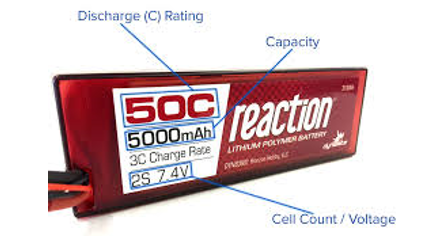Battery capacity is defined as the total amount of electricity generated due to electrochemical reactions in the battery and is expressed in ampere hours. For example, a constant discharge current of 1 C (5 A) can be drawn from a 5 Ah battery for 1 hour. For the same battery a discharge current of 0.1 C (500 mA) can be withdrawn from the battery for 10 hours.
For a given cell type the behavior of cells of different capacities with the same C ratio value is similar. The energy that a battery can deliver in the discharge process is called the capacity of the battery. The unit of the capacity is “ampere hour” and is briefly expressed by the letters “Ah.” The label value of the battery is called rated capacity.(read more here)

The capacity of a battery depends on the following factors:
To the number and size of plates in a cell: Essentially, the number of plates or the large size means that the amount of active substance that stores energy increases. The battery’s ability to store or deliver energy will increase if the active ingredient in the battery plates is excessive.
To the density of the electrolyte: If a high-density electrolyte is put in a battery, the capacity will increase to a certain extent. However, increasing density also means that the battery life is shorter.
Did you know that..…
The earliest known battery was discovered by Wilhelm Konig in 1938. Konig discovered some clay pots in Bagdad, Iraq that contained an iron rod encased in copper. The pots were tested and found to also have contained some kind of acid, thought to be vinegar or wine.
You might also want to read:


